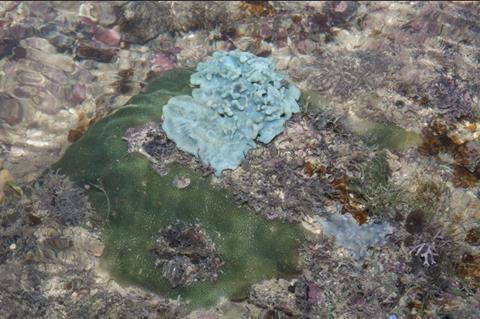Researchers at LMU have demonstrated that sponges react to changes in their microbiome with extensive modifications in gene regulation.

For a number of years, mounting evidence has shown that the microbiome – the totality of all microorganisms that inhabit a living being – interacts with its host in various ways and can influence key life processes. Sponges, which rank among the oldest multicellular life forms on Earth, likewise host a diverse array of microbial communities.
A new study led by Assistant Professor Sergio Vargas and Professor Gert Wörheide from the Department of Earth and Environmental Sciences and the GeoBio-Center of the LMU have now discovered molecular mechanisms in the model organism Lendenfeldia chondrodes via which the sponges respond actively to changes in their microbiome. The researchers see their findings as an indication of deep evolutionary origins for phylogenetic interaction between microbiome and host.
SImple structure
Sponges are organisms with a very simple structure that, in the course of evolution, split off from the rest of the animal kingdom more than 600 million years ago. Sponges possess proteins involved in regulating interactions between sponge and microbiome, and those appear to be responsible for the sponges’ ability to modify their morphology in response to changes in the microbiome.
“This suggests that the sponges’ ability to interact with the microbiome was an evolutionary early development,” Vargas says. “However, there has not yet been sufficient research into the underlying molecular mechanisms.”
Focusing on the Lendenfeldia chondrodes sponge, which is frequently kept in aquariums, the researchers have now investigated whether and how changes in the composition of the microbiome influence the sponge’s gene activity.
Defective microbiome
Lendenfeldia chondrodes is a sponge species with a microbiome dominated by photosynthetic cyanobacteria. It obtains food by filtering microorganisms out of the water but is also supplied with carbon compounds by its symbionts.
The sponges respond to the loss of cyanobacteria – due to shading, for example – with significant changes to their morphology: In the present study, initially blue sponges with foliose (leaf-like) growth forms transformed into white, thread-like morphotypes with a markedly different microanatomy.
Applying transcriptomic methods enabled the scientists to prove for the first time that these changes are accompanied by extensive modifications to gene regulation.
Perceiving changes
“We observed changes in gene activities that are involved in both immune response and development,” Vargas notes. “This suggests that sponges can perceive changes in their microbiome and actively respond to them via development processes.”
The researchers suspect that shaded sponges modify their metabolism to make up for the fact that they receive fewer carbon compounds from their symbionts. “Our findings underscore the importance of the microbiome for the nutrition and development of animals in general and point to a deep evolutionary history shared by animals and their bacterial partners,” Vargas says.







No comments yet